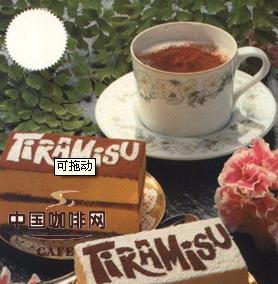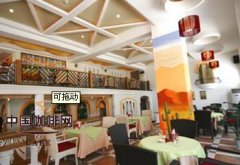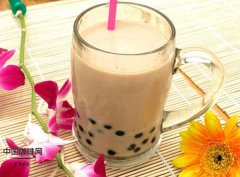The taste of coffee how many aromas does a cup of coffee have?

The color, aroma and taste of coffee are caused by some complex chemical changes that take place during the baking process. Therefore, raw beans must go through appropriate chemical procedures to achieve the most balanced state of its essential ingredients in order to be regarded as the best baked beans. The aroma of coffee changes with the heat, so the baking time should be shortened as much as possible, and the heat should be controlled at the lowest temperature that can produce effective chemical composition of coffee beans, that is, the time and heat of the shortest process, so that coffee beans can produce the most suitable composition ratio.
Fragrance
Aroma is the life of coffee quality, and it can best represent the coffee production process and baking technology, as well as the climate, elevation, variety, refined treatment, harvest, storage, and the appropriateness of baking technology in the consuming country. The results of gas chromatographic analysis showed that the aroma of coffee was composed of acid, alcohol, acetaldehyde, ketone, ester, sulfur compound, phenol, nitrogen compound and nearly hundreds of volatile components. Generally speaking, fat, albumen and sugars are important sources of aroma, while lipids blend with the sour and bitter of coffee to form a smooth flavor. Therefore, the disappearance of fragrance means that the quality is getting worse, and the relationship between aroma and quality is very close.
Bitter taste
The basic taste of coffee is the strength of bitterness and the texture of bitterness. Raw beans contain only a very small amount of bitterness, followed by baked sugar, part of starch, caramelization and carbonization of fiber, which produces the most symbolic bitterness of coffee. Caffeine, one of the bitter ingredients, is also an important substance showing the pharmacological characteristics of coffee, and its content varies according to its type, purification and baking degree. if the baking temperature is high, its content will be reduced, so the shallower the roasting is, the stronger the pharmacological effect of caffeine is, and the deeper the roasting is, the weaker it is. Generally speaking, coffee with strong sour taste will have a weak bitter taste, while coffee with bitter taste as the main body is prone to lack of sour taste, so the proportion of sour taste and bitter taste gives room for the development of coffee taste. The bitter taste mainly depends on the baking time, firepower and firepower, but it will also be affected by the soaking temperature and soaking time, so the bitter taste of the coffee that you want to brew is high and refreshing, in addition to the good quality of raw beans, but also need to have a wealth of knowledge and technology of baking to soak.
Sour taste
The sour taste must be affected by the quality and variety of raw beans. As far as the elevation of the variety is concerned, coffee grown in highlands is sour than that in lowlands, and beans just harvested are sour than beans that have been harvested for a while. The increase and decrease of acid varies with different kinds of acid. generally, the beans with shallow baking are rich in sour taste, and those with deeper baking degree are lack of sour taste. Just harvested beans, good quality, high moisture content, if the appropriate heat to produce a moderate sour taste, will make the coffee taste better, make people feel more deep.
Mellow and sweet
Generally speaking, we use strong alcohol to show the round, mellow and strong taste of coffee. The unique sweetness of high-end coffee is related to the bitter taste, so the refreshing taste must have a sweet taste. In the baking process, part of the carbohydrates such as sucrose and glucose will be caramelized, and the rest will form sweetness. the product of moderate sweetness is easily lost if it is overheated during baking and baking.
Important Notice :
前街咖啡 FrontStreet Coffee has moved to new addredd:
FrontStreet Coffee Address: 315,Donghua East Road,GuangZhou
Tel:020 38364473
- Prev

Standing up drinking Italian coffee! The cultural atmosphere of coffee in Italy
Italians love coffee, so cafes are springing up everywhere. But you may not know that authentic Italian coffee is drunk standing up. It turns out that Italy is narrow and densely populated, with an inch of land and gold. If so many cafes were seated, it would not only occupy an area of land but also cost money. So they chose to drink it standing up. Anyway, the authentic Italian steamed coffee is very strong and refreshing, even if it stands for a while.
- Next

Teach you how to make coffee and brew coffee.
The first thing to introduce is not to brew the coffee, but to make it. There are several key points to pay attention to when making coffee at home: 1. Different coffee powder practices are different. You can usually ask the shop assistant who buys the coffee. two。 When the water temperature is 92 ℃-96 ℃, it is suitable to use a small household coffee machine, coffee should pass through filter paper or filter, generally speaking, 175ml coffee can be made with 10g coffee powder. That's for sure,
Related
- Detailed explanation of Jadeite planting Land in Panamanian Jadeite Manor introduction to the grading system of Jadeite competitive bidding, Red bid, Green bid and Rose Summer
- Story of Coffee planting in Brenka region of Costa Rica Stonehenge Manor anaerobic heavy honey treatment of flavor mouth
- What's on the barrel of Blue Mountain Coffee beans?
- Can American coffee also pull flowers? How to use hot American style to pull out a good-looking pattern?
- Can you make a cold extract with coffee beans? What is the right proportion for cold-extracted coffee formula?
- Indonesian PWN Gold Mandrine Coffee Origin Features Flavor How to Chong? Mandolin coffee is American.
- A brief introduction to the flavor characteristics of Brazilian yellow bourbon coffee beans
- What is the effect of different water quality on the flavor of cold-extracted coffee? What kind of water is best for brewing coffee?
- Why do you think of Rose Summer whenever you mention Panamanian coffee?
- Introduction to the characteristics of authentic blue mountain coffee bean producing areas? What is the CIB Coffee Authority in Jamaica?

